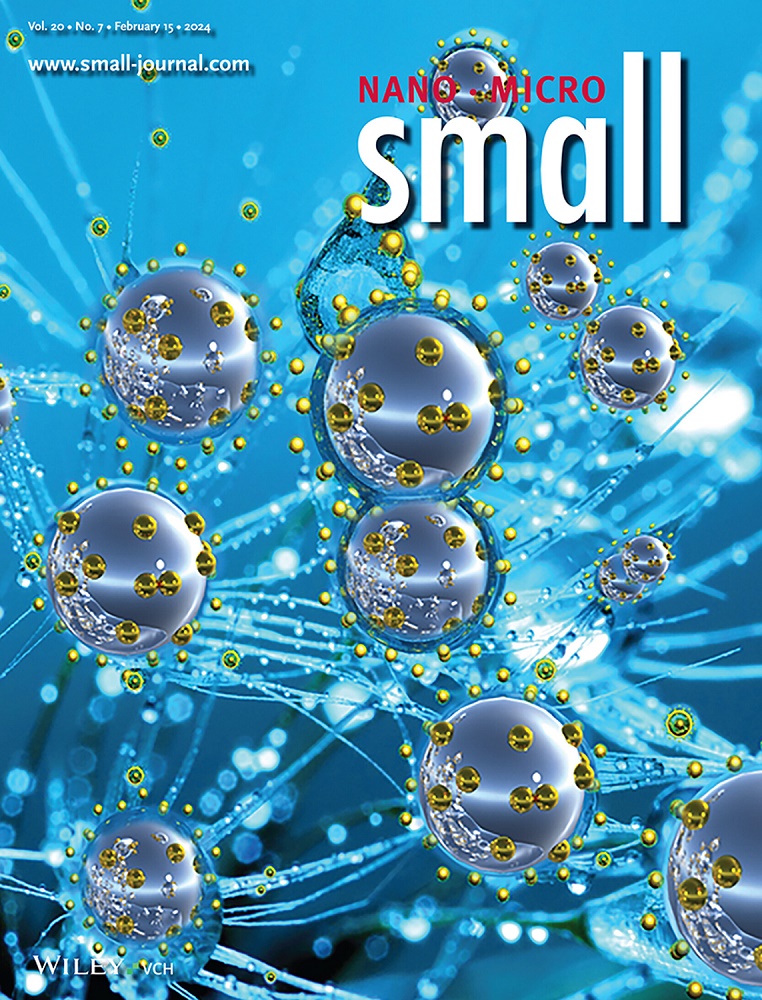Ag/Sn Dual-Atoms with Synergistic Electrocatalysis for High-Power Density Vanadium Flow Batteries.
IF 13
2区 材料科学
Q1 CHEMISTRY, MULTIDISCIPLINARY
引用次数: 0
Abstract
Electrocatalyst with high activity is crucial to improve the power density of a vanadium flow battery (VFB), which is one of the most promising technologies in long duration large-scale energy storage. However, the accelerated redox reaction of vanadium ions normally accompanies hydrogen evolution as well. Herein, the Ag/Sn dual atoms electrocatalysts (Ag/Sn-DAs) are reported, exhibiting both high electrocatalytic activity and hydrogen evolution overpotential. Electrochemical in situ characterization indicates that the Ag/Sn-DAs can significantly promote the dehydration of [V(H2O)6]3+/[V(H2O)6]2+ and effectively inhibit hydrogen evolution reaction (HER). Theoretical calculations reveal that the optimized electronic structure and d-band center of Ag by the adjacent Sn change the *H adsorption sites and reduce the dehydration energy barrier of [V(H2O)6]3+/[V(H2O)6]2+. As a result, a VFB single cell assembled with Ag/Sn-DAs decorated graphite felt (GF) electrode delivers a high energy efficiency (EE) of 81.2% at a current density of 200 mA cm-2 and a peak power density of 925 mW cm-2, which is much higher than pristine GF (66.7% and 700 mW cm-2). This work presents a paradigm for synergistic catalysis in VFBs.Ag/Sn双原子协同电催化高功率密度钒液流电池
高活性电催化剂是提高钒液流电池功率密度的关键,是长时间大规模储能中最有前途的技术之一。然而,钒离子的加速氧化还原反应通常伴随着析氢。本文报道了Ag/Sn双原子电催化剂(Ag/Sn- das),该催化剂具有较高的电催化活性和析氢过电位。电化学原位表征表明,Ag/Sn-DAs能显著促进[V(H2O)6]3+/[V(H2O)6]2+的脱水,有效抑制析氢反应(HER)。理论计算表明,相邻Sn对Ag的电子结构和d带中心进行了优化,改变了*H的吸附位点,降低了[V(H2O)6]3+/[V(H2O)6]2+的脱水能势。结果表明,采用Ag/Sn-DAs修饰石墨毡(GF)电极组装的VFB单电池在电流密度为200 mA cm-2时的能量效率为81.2%,峰值功率密度为925 mW cm-2,大大高于原始GF(66.7%和700 mW cm-2)。这项工作为vfb的协同催化提供了一个范例。
本文章由计算机程序翻译,如有差异,请以英文原文为准。
求助全文
约1分钟内获得全文
求助全文
来源期刊

Small
工程技术-材料科学:综合
CiteScore
17.70
自引率
3.80%
发文量
1830
审稿时长
2.1 months
期刊介绍:
Small serves as an exceptional platform for both experimental and theoretical studies in fundamental and applied interdisciplinary research at the nano- and microscale. The journal offers a compelling mix of peer-reviewed Research Articles, Reviews, Perspectives, and Comments.
With a remarkable 2022 Journal Impact Factor of 13.3 (Journal Citation Reports from Clarivate Analytics, 2023), Small remains among the top multidisciplinary journals, covering a wide range of topics at the interface of materials science, chemistry, physics, engineering, medicine, and biology.
Small's readership includes biochemists, biologists, biomedical scientists, chemists, engineers, information technologists, materials scientists, physicists, and theoreticians alike.
 求助内容:
求助内容: 应助结果提醒方式:
应助结果提醒方式:


